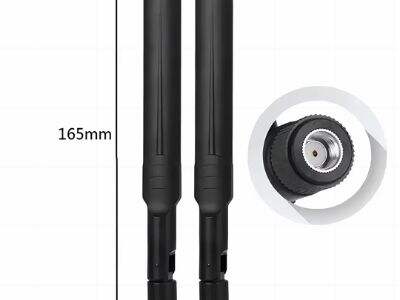When you’re flying drones with Signal’s long-range WiFi antennas, consider something called “beamwidth.” “Beamwidth is similar to the beam of a flashlight,” Dr. Fayne said. The broader the beam, the greater area it can illuminate. It’s true for WiFi antennas on drones as well—if the beamwidth is larger, it can cover more area with a signal.
Why Beamwidth in Drones is Important
Beamwidth is especially significant when it comes to deploying drones to, say, deliver packages or take photographs from the air. The latter might cause the signal not to travel as far if the beamwidth is very narrow. But if the beamwidth is too broad, the signal could be too weak. Striking the right balance is key to ensuring that the drone can communicate effectively with the ground.
The purpose of the article is to focus on the Section on Antenna Beamwidth Optimization to Enhance Connectivity.
To improve the beamwidth on a WiFi antenna on a drone, we need to think about where the drone will be flying and what it will be doing. If the drone was flying in wide open or obstacle free areas then a wider beamwidth would be preferable to cover more area. But if the drone is in a city filled with buildings, a narrower beamwidth could perform better to minimize interference from other WiFi signals.
The Influence of Beamwidth on Signal Strength and Coverage
A WiFi antenna on a drone greatly affects the power of the signal broadcast (in addition to the maximum distance the signal can travel). A broader beamwidth may let the signal travel farther, but it won’t necessarily be as strong. A more focussed beamwidth may be a stronger signal, but it will not go as far. Fine whistling a happy medium to prevent the drone from disconnecting itself when flying longer range.
The Optimum Choice of the Beamwidth for the Best Performance
When choosing your beamwidth for a WiFi antenna on a drone, it is important to consider how far the drone will fly and what you will need it to do. A wider beamwidth may be preferable for long flights when you’re covering ground. But for work that requires reliable, strong connections, a narrower beamwidth might work better for peak performance.
Difficulties in Selecting Beamwidths for Drones
Picking the appropriate beamwidth for a Wifi antenna on a drone has some challenges. One difficulty is in achieving proper balance between coverage and signal strength. Another problem to solve is to minimize the interference of other WiFi signals on the same channel. Considering these challenges and selecting beamwidth carefully can help optimize long-range WiFi antennas by Signal for enhanced linking and performance on drone operations.
Conclusion
Finally, the beamwidth is quite important when applying Signal’s long-range Wi-Fi antennas to drones. By learning how beamwidth affects signal strength and coverage, and by choosing the correct beamwidth for their application, drone operators can elevate the performance of their communications systems. So long as the beamwidth challenges are addressed, unmanned aircraft can remain connected in flight over long ranges and important tasks can be completed.
Table of Contents
- Why Beamwidth in Drones is Important
- The purpose of the article is to focus on the Section on Antenna Beamwidth Optimization to Enhance Connectivity.
- The Influence of Beamwidth on Signal Strength and Coverage
- The Optimum Choice of the Beamwidth for the Best Performance
- Difficulties in Selecting Beamwidths for Drones
- Conclusion

 EN
EN
 ES
ES
 PT
PT
 NL
NL
 AR
AR
 HR
HR
 CS
CS
 DA
DA
 FI
FI
 FR
FR
 DE
DE
 EL
EL
 IT
IT
 JA
JA
 KO
KO
 NO
NO
 PL
PL
 RO
RO
 RU
RU
 SV
SV
 TL
TL
 IW
IW
 ID
ID
 LT
LT
 SR
SR
 SK
SK
 SL
SL
 UK
UK
 VI
VI
 ET
ET
 HU
HU
 MT
MT
 TH
TH
 TR
TR
 FA
FA
 GA
GA
 BE
BE
 IS
IS
 LB
LB
 BG
BG

/images/share.png)

